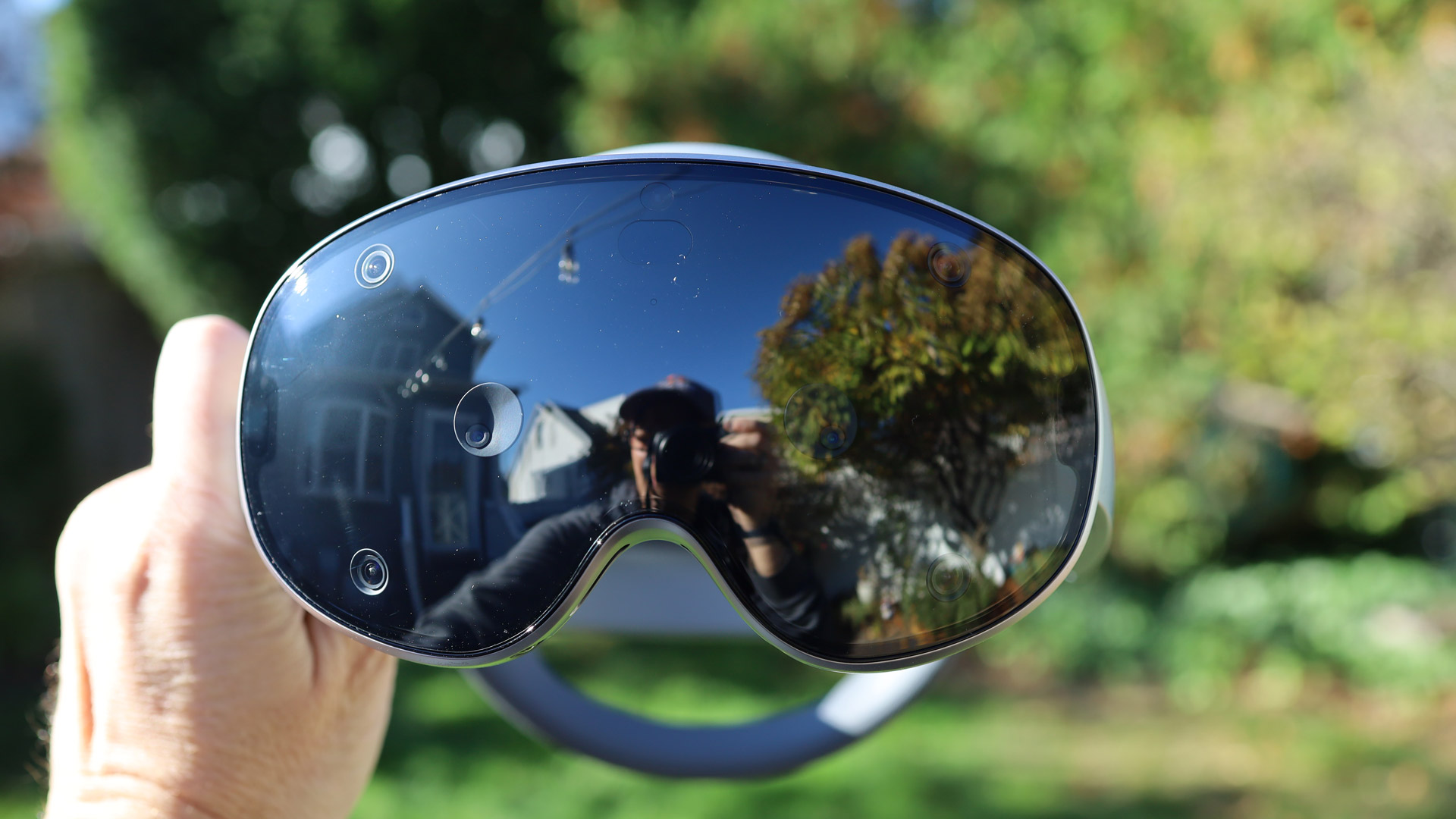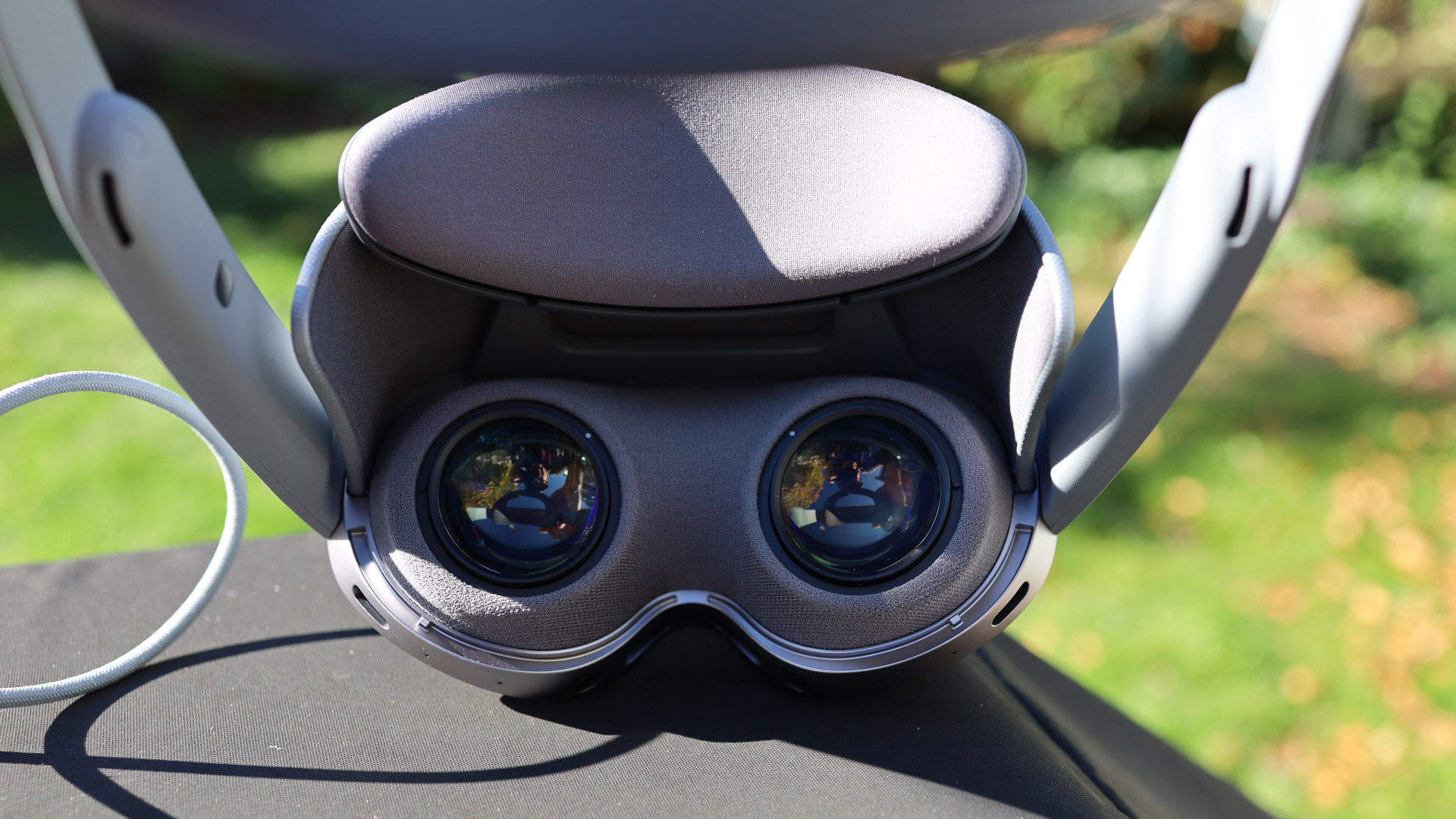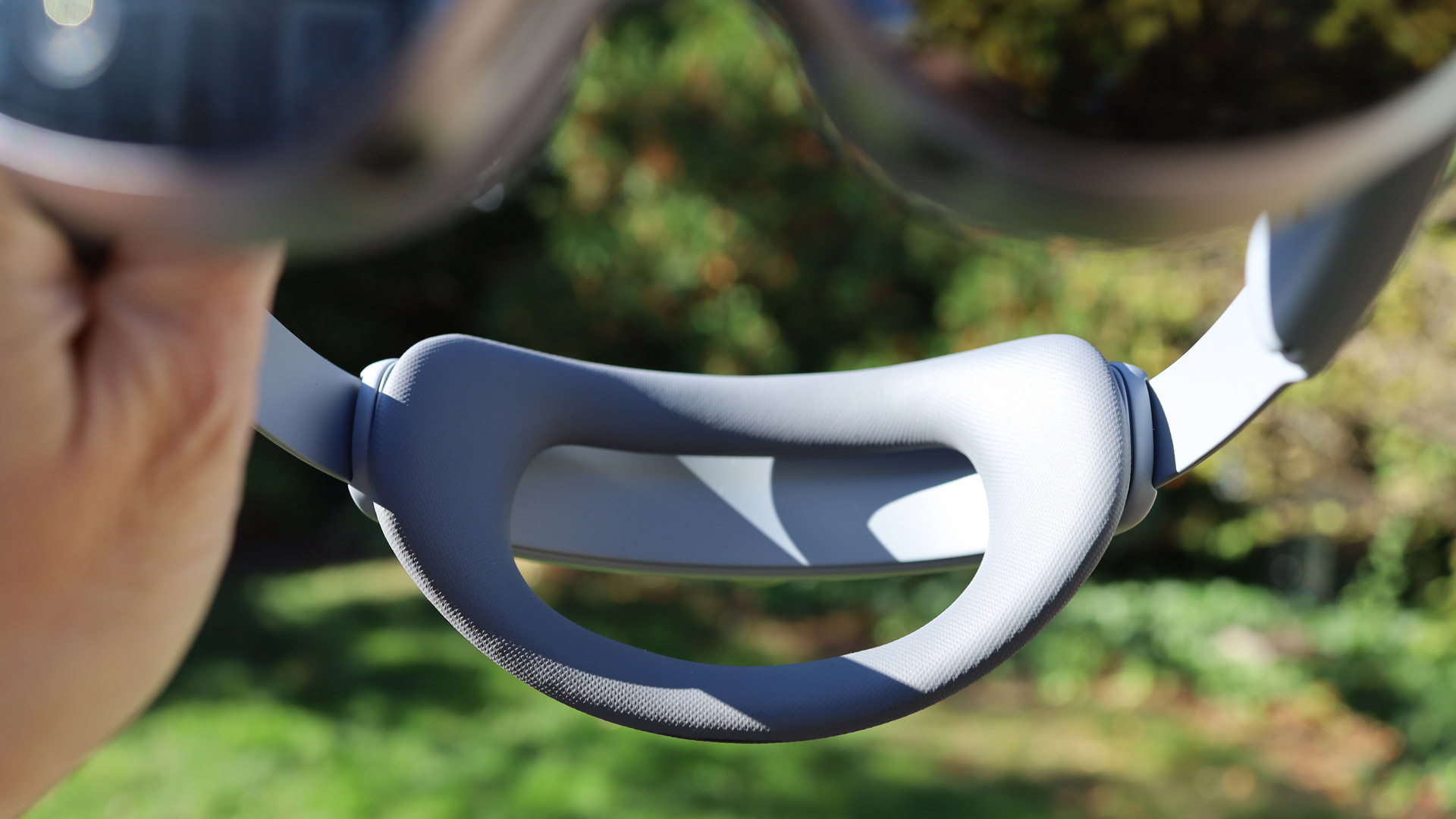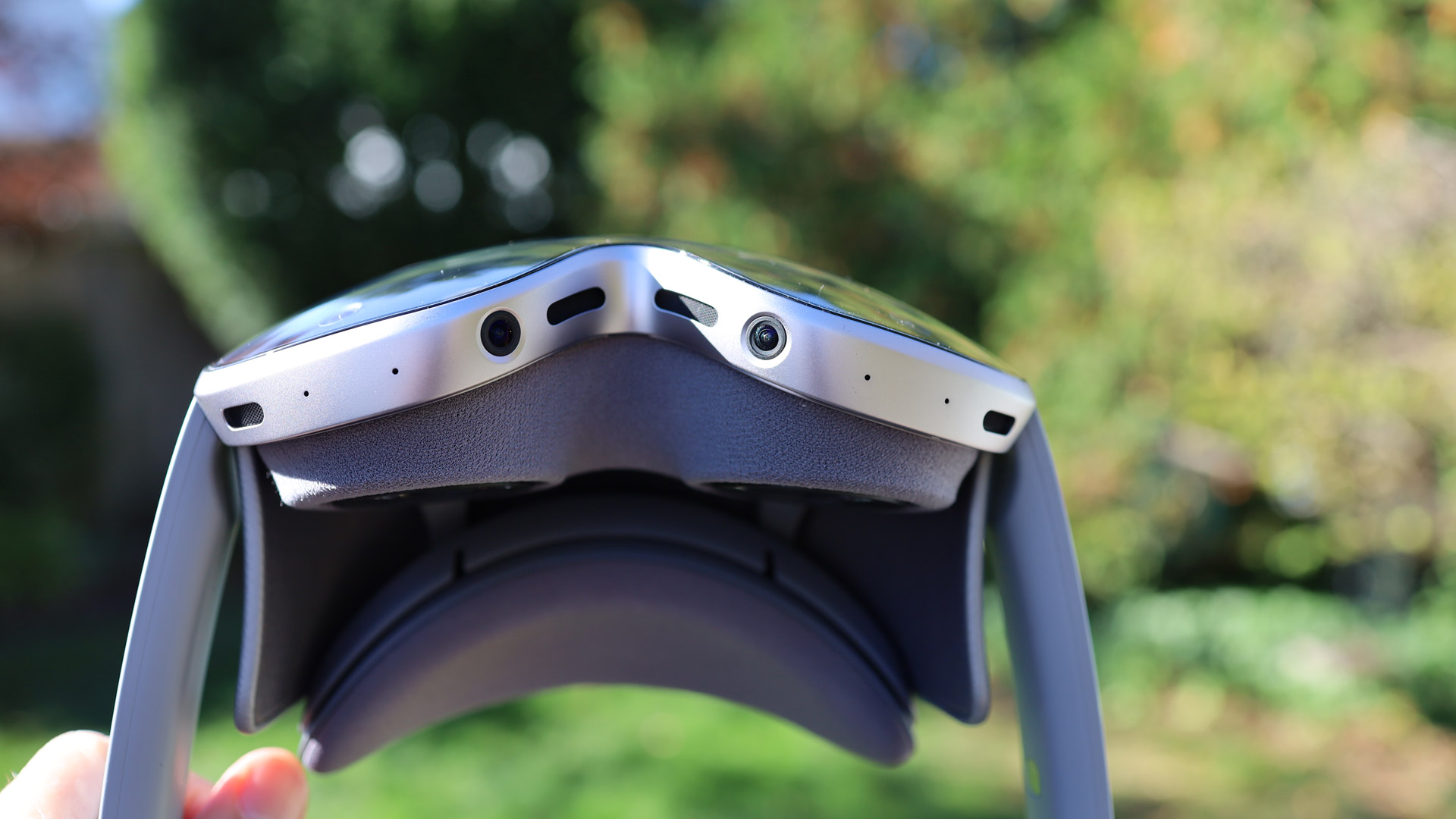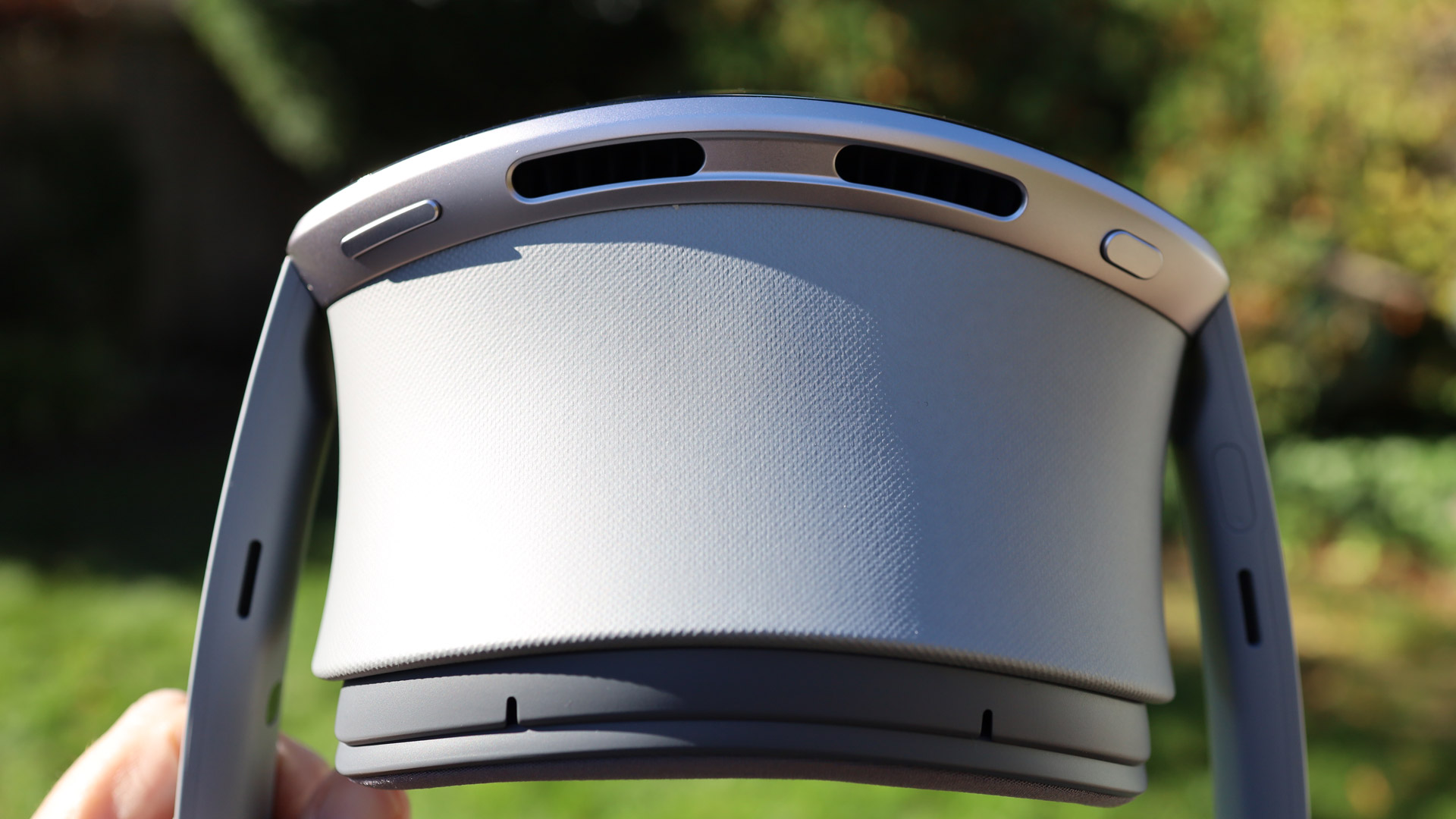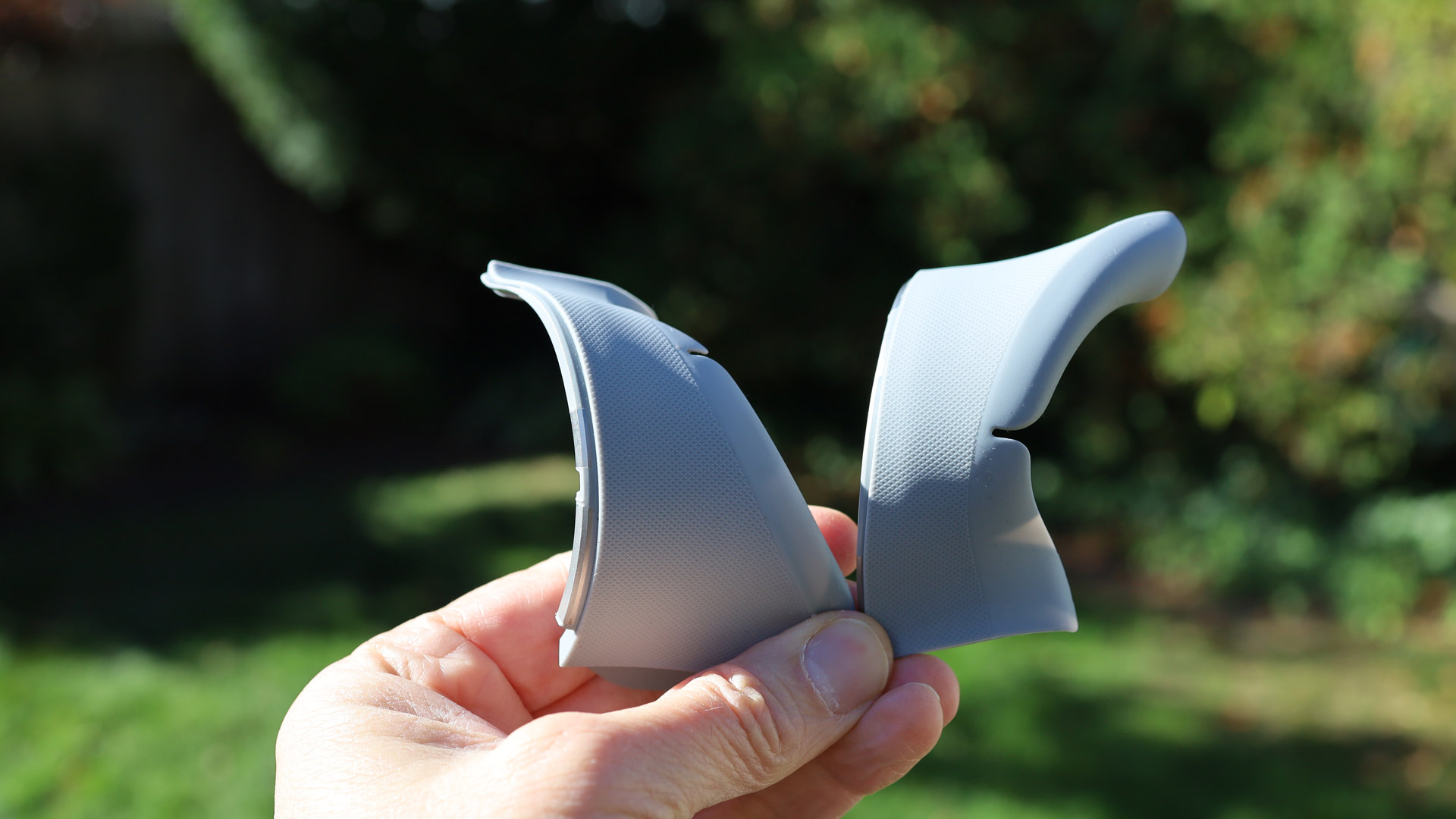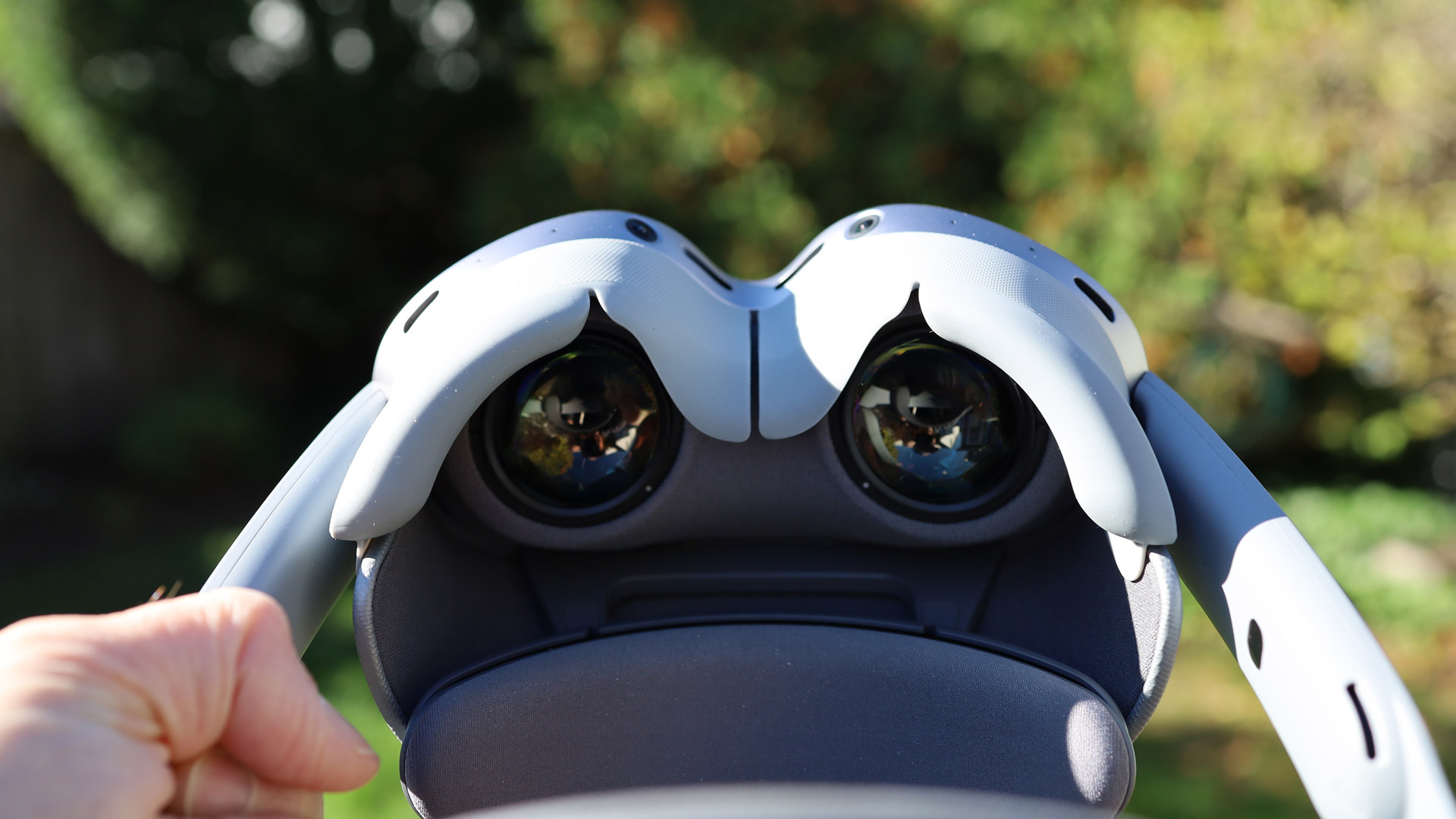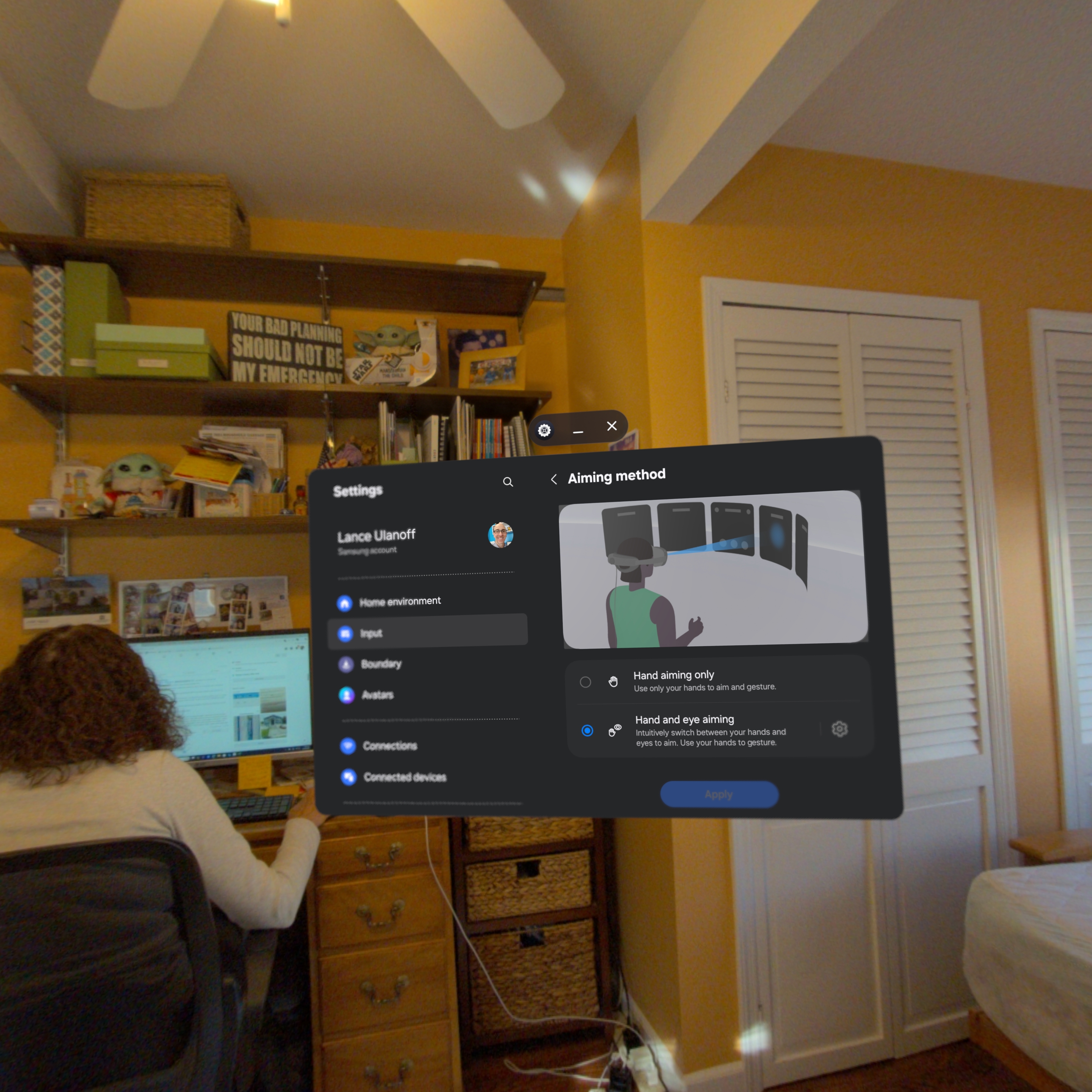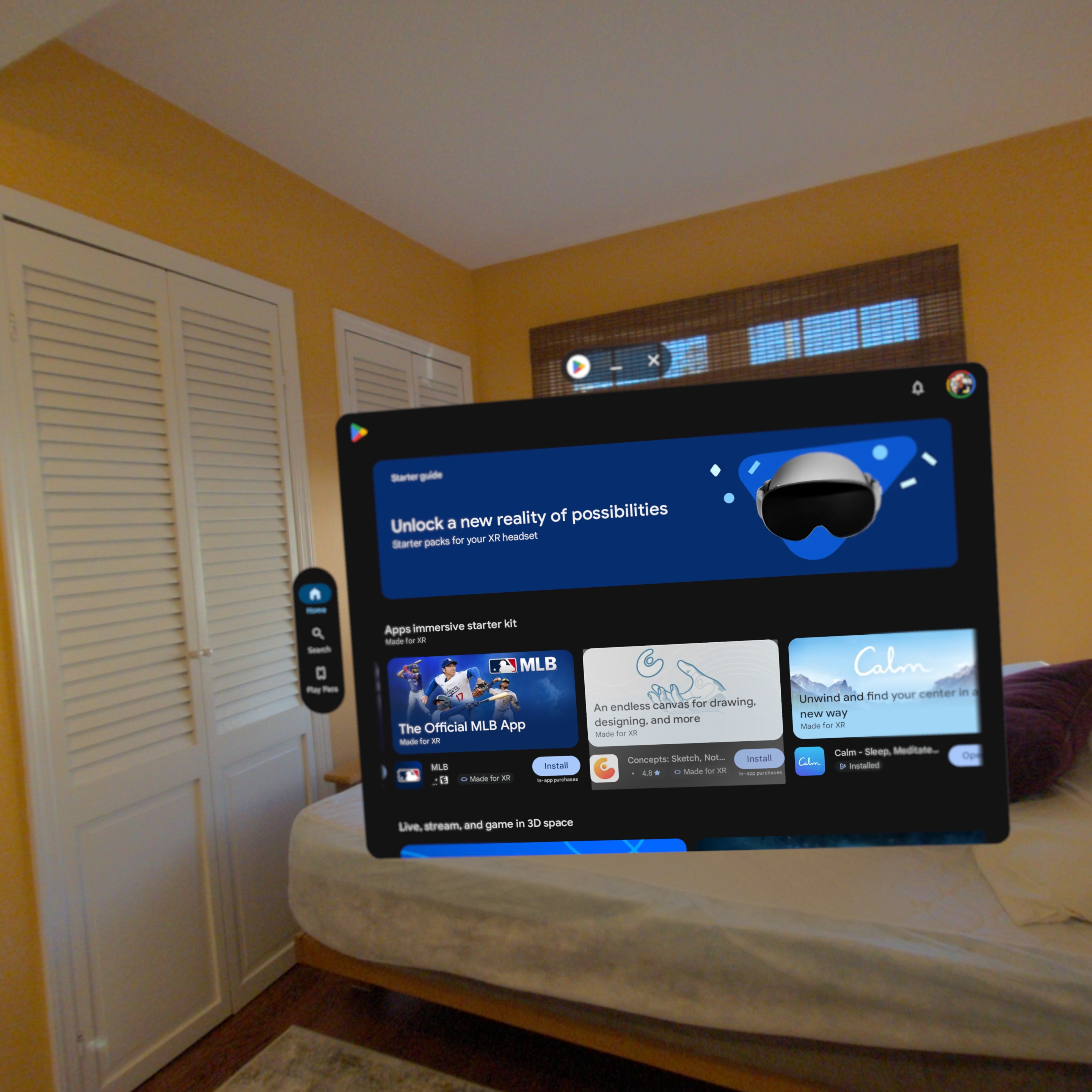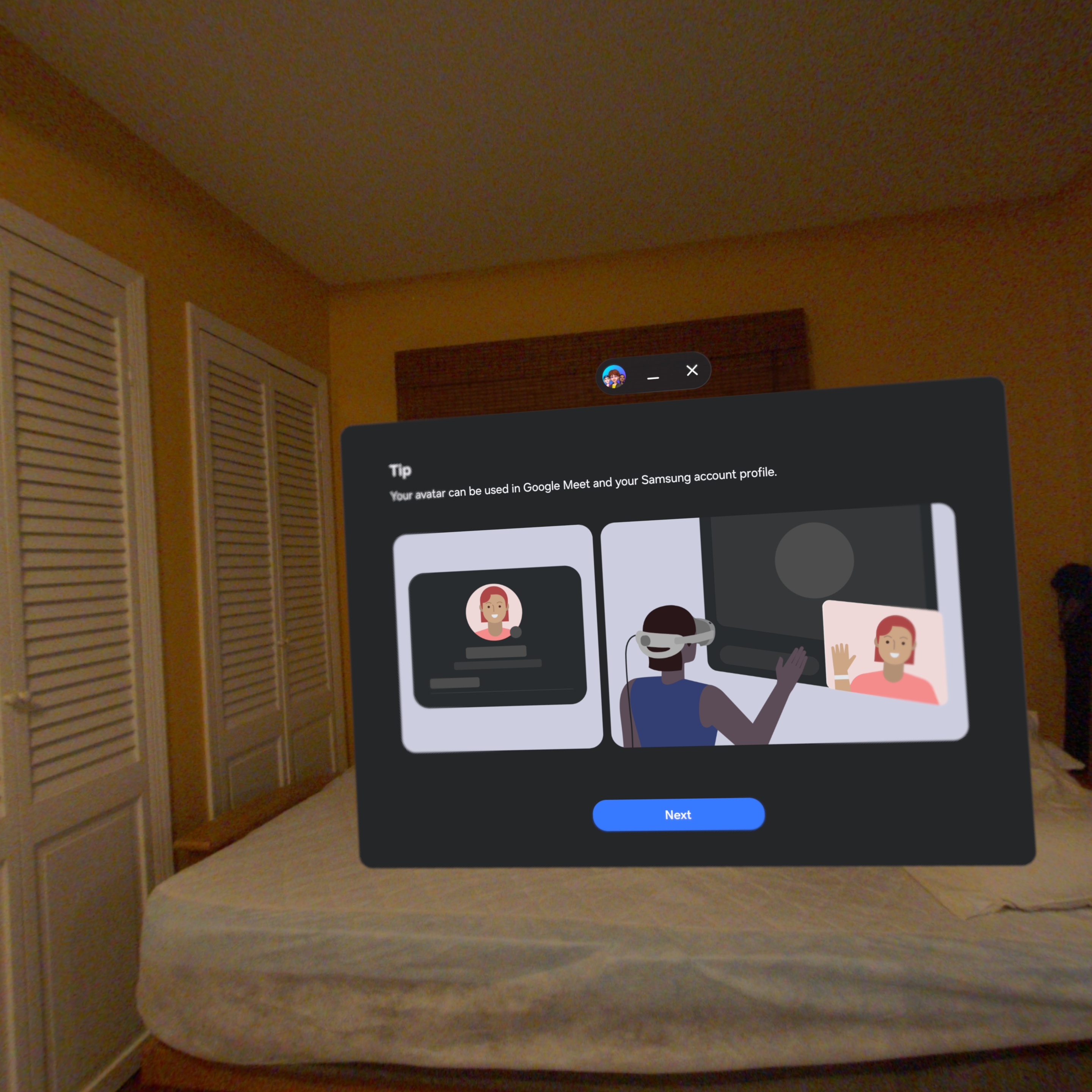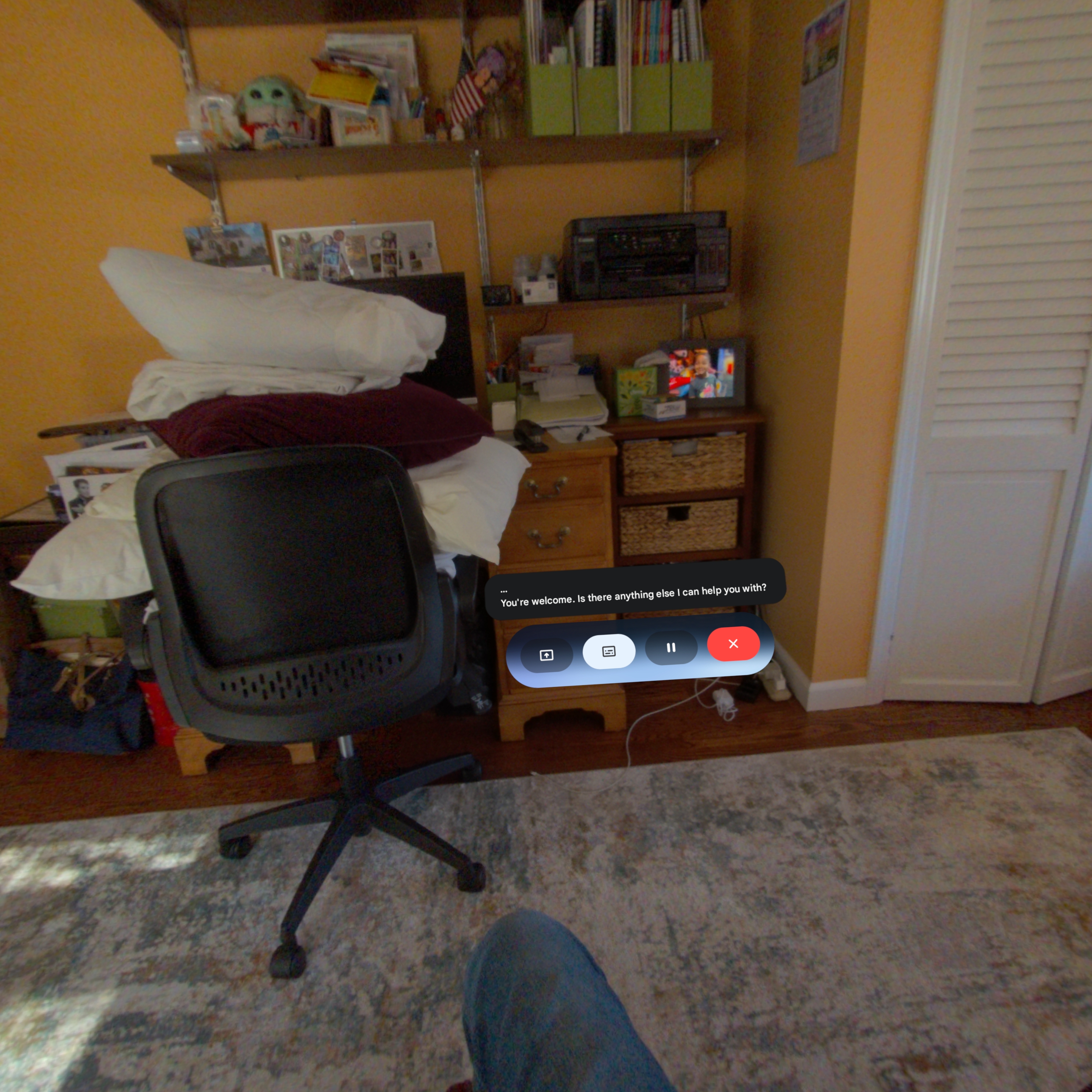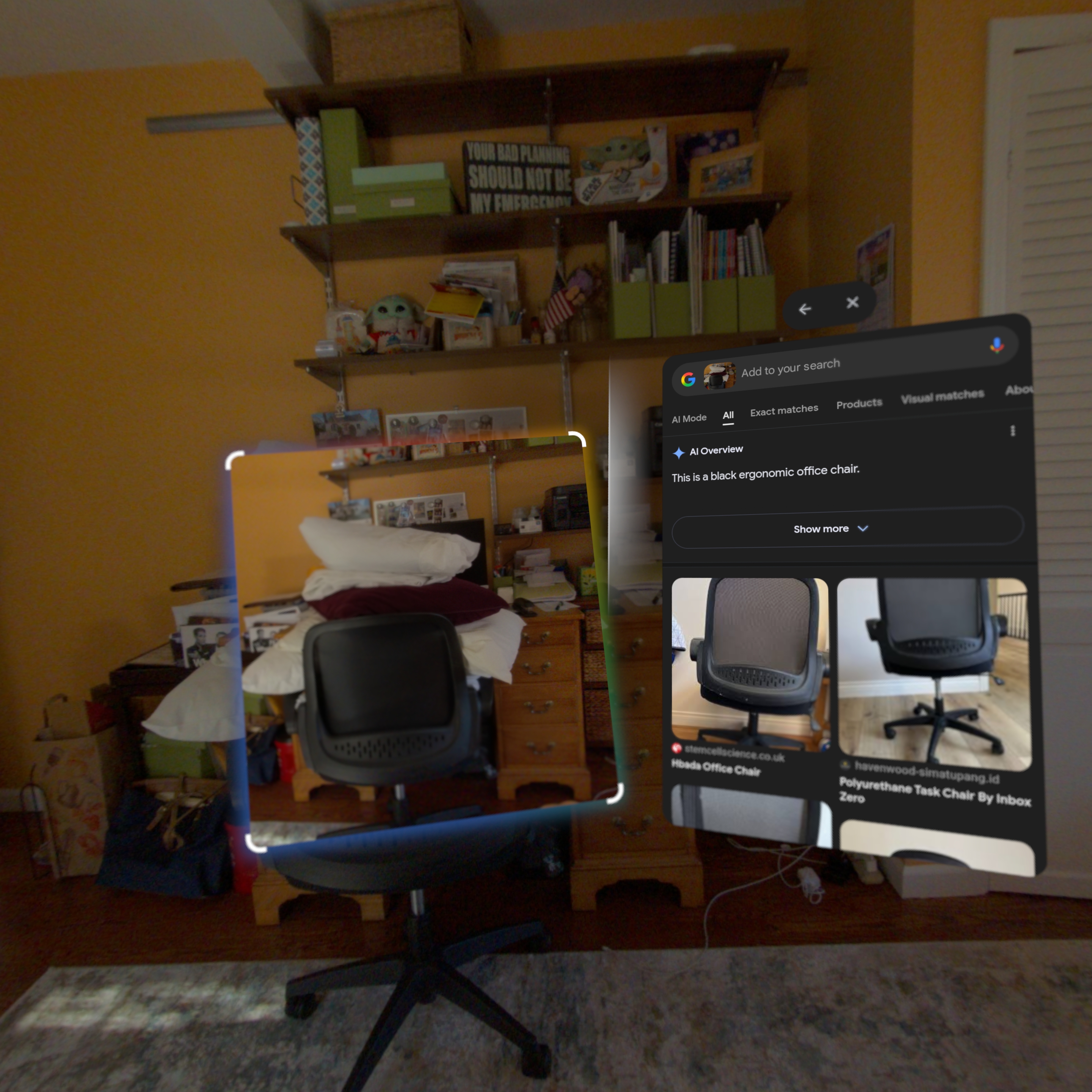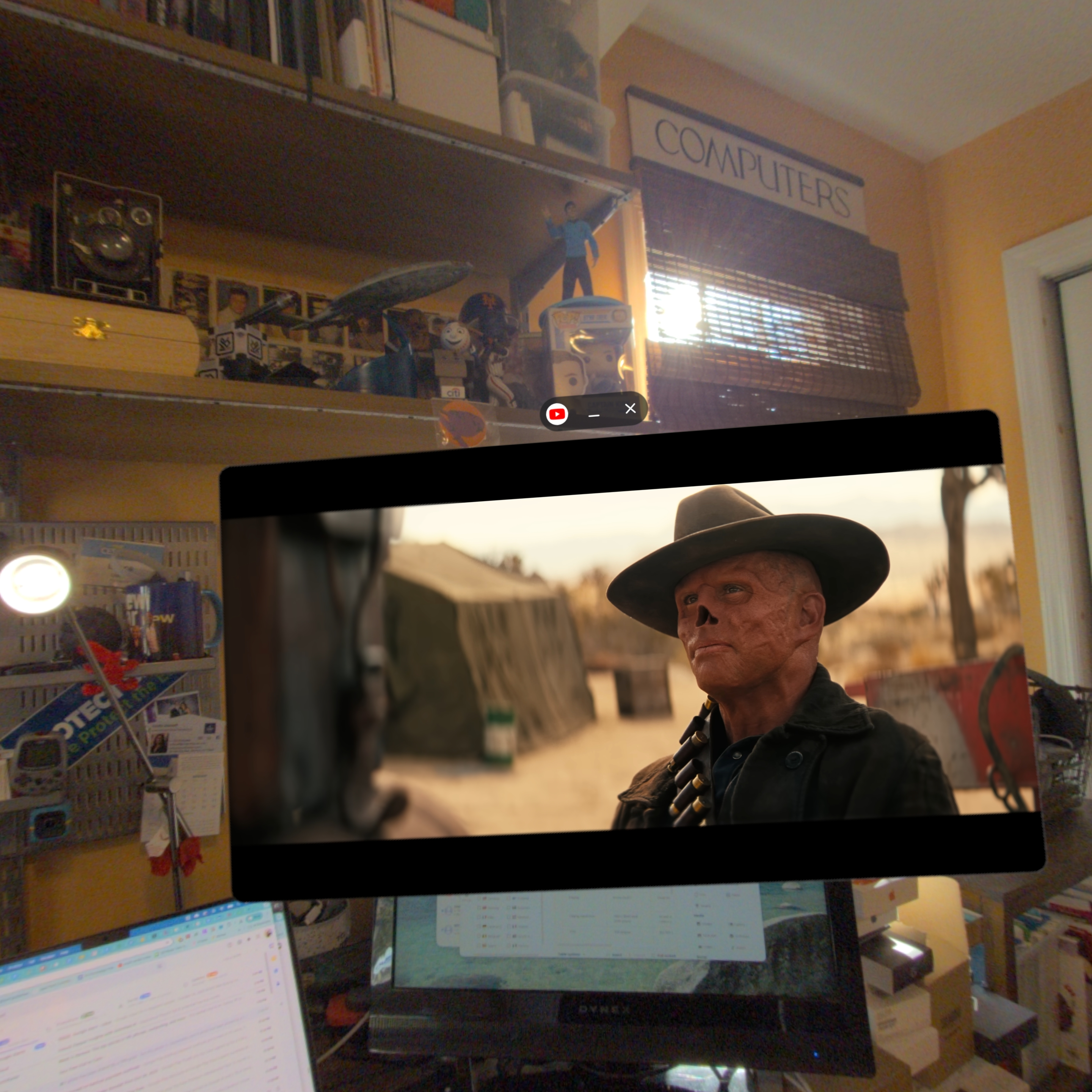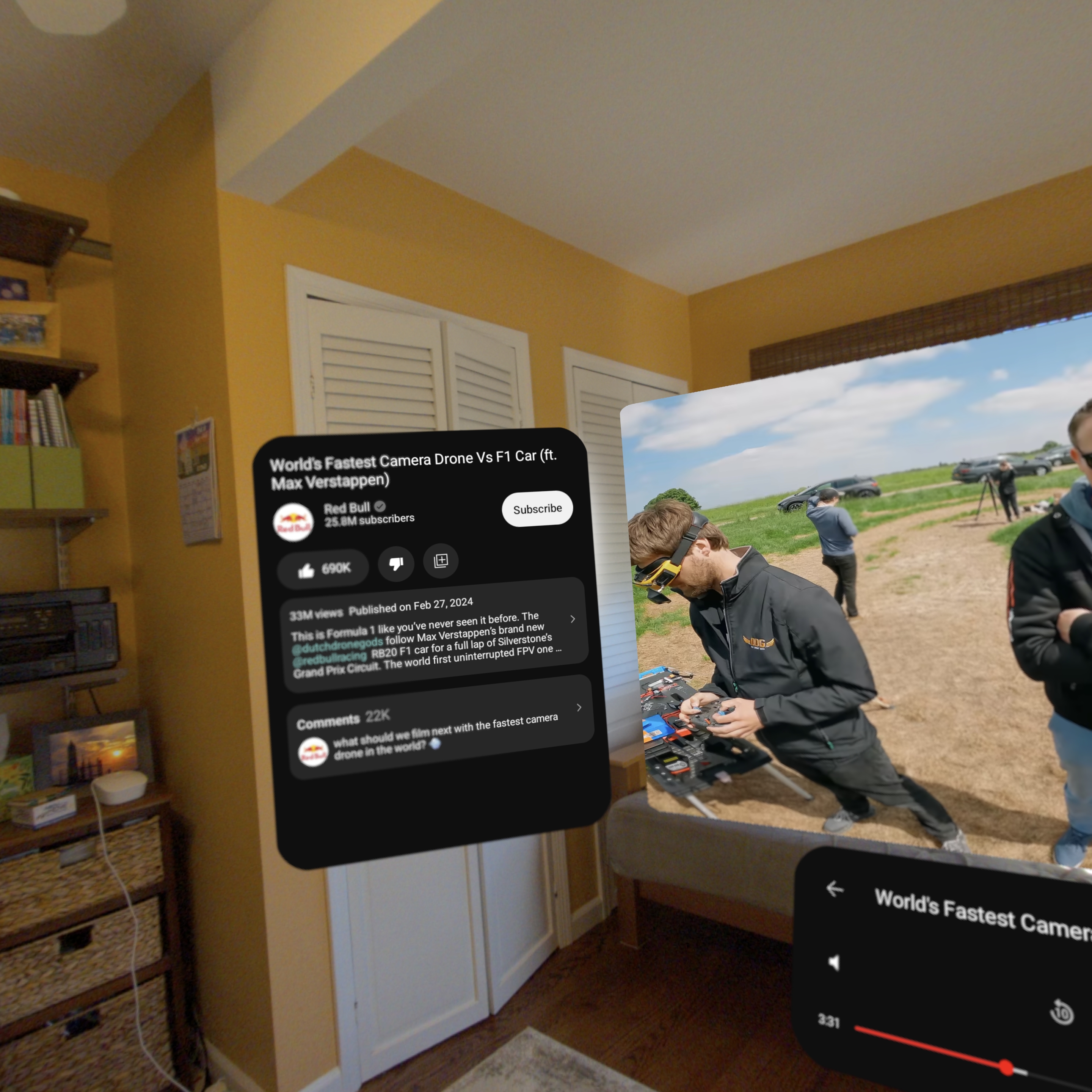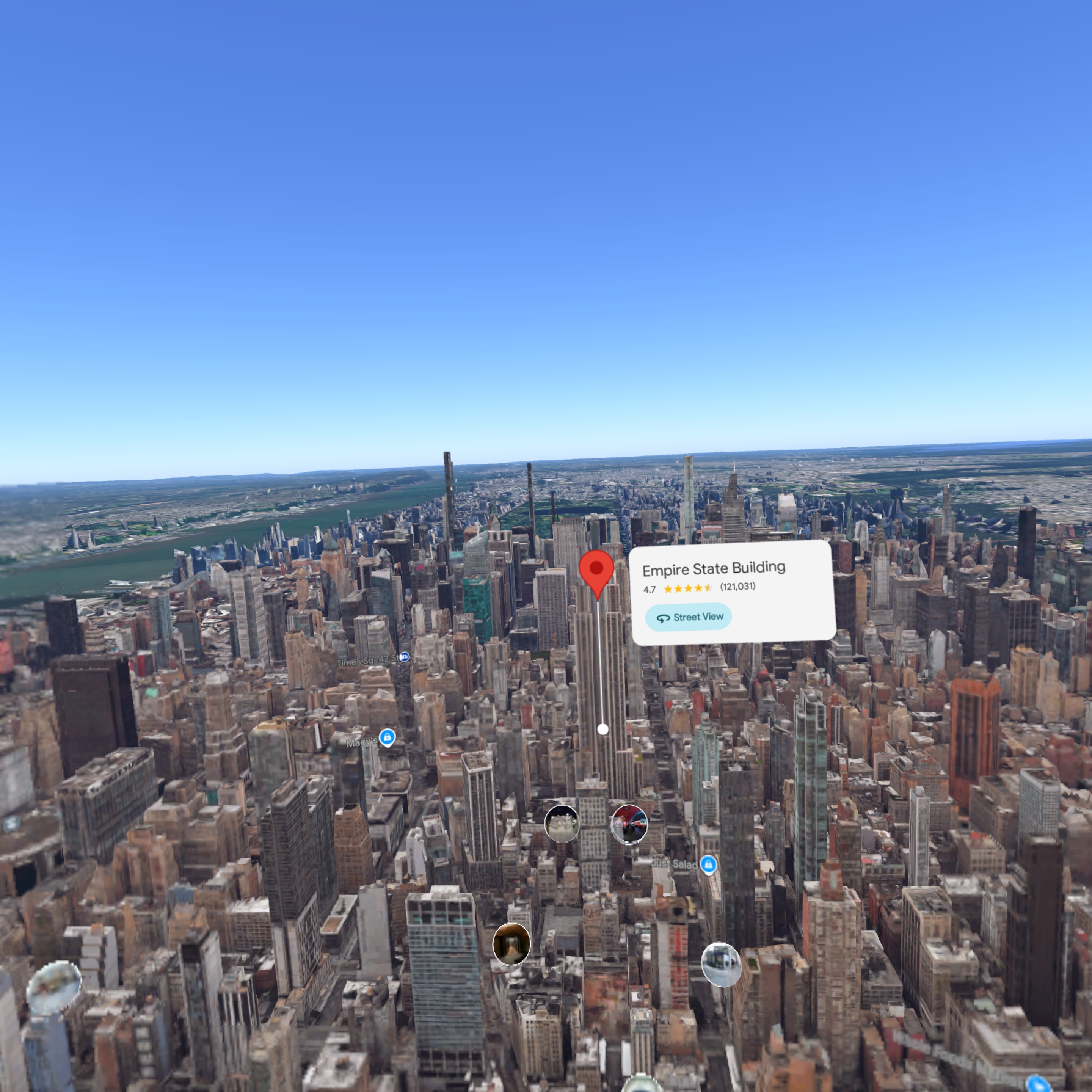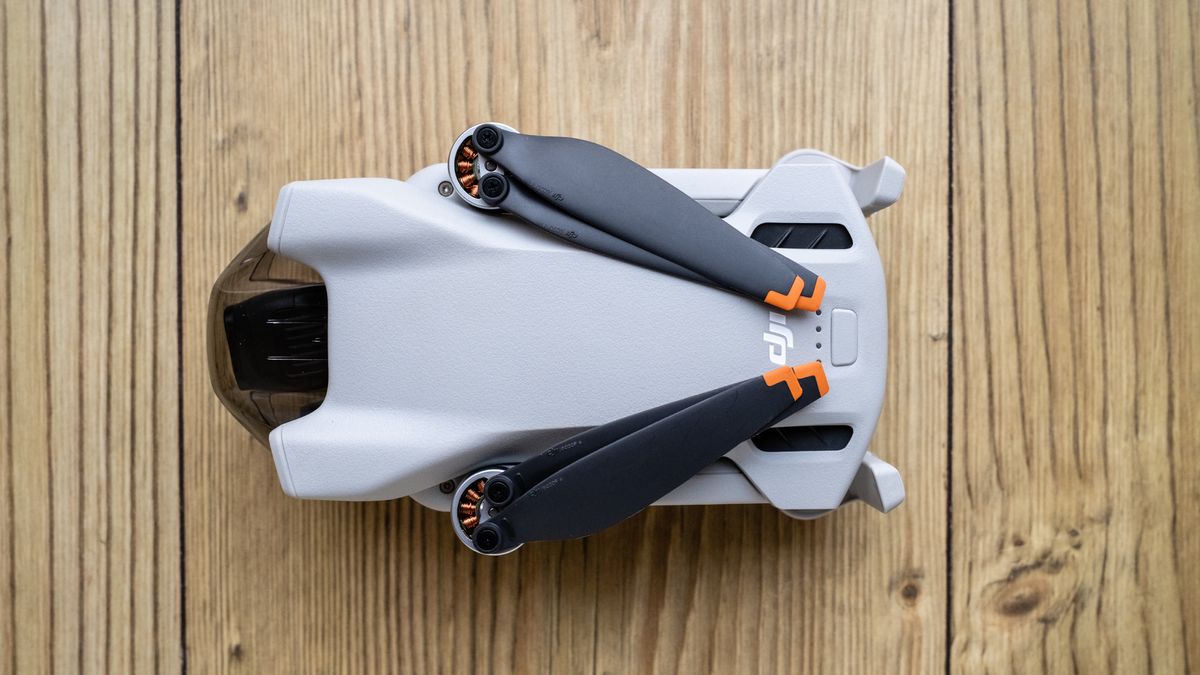Why you can trust TechRadar
We spend hours testing every product or service we review, so you can be sure you’re buying the best. Find out more about how we test.
Samsung Galaxy XR: Two-minute review
I think I finally understand why Apple’s Vision Pro costs so darn much. The Samsung Galaxy XR delivers moments of beauty and inspiration, but it’s also stuffed full of disappointment, from the sound of fans on your face to imprecision of gestures to a total lack of ‘wow’ apps and experiences.

The lack of a way to integrate my Windows desktop workflow was also frustrating (the headset currently only works with Samsung Galaxy Books) and forced me to be more intentional in my use. I could be inside Android XR or I could be productive on my laptop, but never both.
There is some elegance in the overall Android XR platform, but I also felt like it wasn’t nearly as cohesive as, say, visionOS.
Among the positives are the video viewing experience and Dolby audio. It all looked and sounded great, and I could see watching a movie on that big virtual screen.
The immersive environments are impressive, but no more so than Apple’s. Overall, I wondered, “Where are the dinosaurs? Where’s the virtual butterfly landing on my fingertip? Where’s the magic?”
So, yes, the Samsung Galaxy XR is way cheaper than the Vision Pro, but it has not arrived fully realized, or with any of the excitement I expect from a next-gen spatial computer.
Samsung Galaxy XR: Price and availability
Half the price of the Vision Pro
Still expensive compared to VR headsets
Samsung unveiled the Galaxy XR mixed reality headset on October 21 in the US and South Korea. It’s priced at $1,799 (availability and pricing for other regions is TBC, but that price converts to about £1,340 or AU$2,770).
For those who wear prescription glasses, Kodak lens inserts start at $99. Samsung is also selling optional controllers for $249, and an optional carrying case for $249.
Value score: 4.5
Samsung Galaxy XR: What’s in the box
- The Samsung Galaxy XR mixed reality headset
- Extra forehead spanner
- Battery with an attached cable
- USB-C charging cable and adapter
- Rubber light seals
- Rubber and felt cover
- A polishing cloth
Samsung Galaxy XR: Specs
| Header Cell – Column 0 |
Samsung Galaxy XR |
Apple Vision Pro M5 |
Meta Quest 3 |
Meta Quest Pro |
|---|---|---|---|---|
|
Dimensions |
170mm wide x 280mm long |
Est: 152 x 101 x 101mm / 6 x 4 x 4 inches |
184 x 160 x 98mm / 7.2 x 6.3 x 3.9 inches |
265 x 127 x 196mm / 10.4 x 5 x 7.7 inches |
|
Weight |
545g |
From 1.3lbs / 600g |
1.14lbs / 515g |
1.6lbs / 722g |
|
Display |
micro-OLED |
Dual micro-OLED |
Two LCD displays |
Two LCD displays |
|
Display resolution |
3552 x 3840 dual (27M pixels) |
4K per eye (23 million pixels) |
2064 x 2208 pixels per eye |
1920 x 1080 per eye |
|
FOV |
109-degree |
Est 100-degree |
110-degree horizontal, 96-degree vertical |
120-degree |
|
Refresh rate |
60Hz, 72Hz, 90Hz |
90Hz, 96Hz, 120Hz |
72Hz, 80Hz, 90Hz, 120Hz |
90Hz |
|
Chipset |
Qualcomm Snapdragon® XR2+ Gen 2 Platform |
Apple silicon M2, R1 |
Qualcomm Snapdragon XR2 Gen 2 |
Qualcomm Snapdragon XR2+ |
|
RAM |
16GB |
16GB |
8GB |
12GB |
|
Storage |
256GB |
256GB, 512GB, 1TB |
128GB or 512GB |
256GB |
|
Battery life |
2 hours |
3 hours (rated for video) |
2 hours 12 minutes |
2 hours |
Samsung Galaxy XR: Design and display
- Decent if slightly retro design
- A lot of plastic, and doesn’t exude a premium feel
- Comparatively lightweight, and better balanced than the Vision Pro
- External battery pack and cable
There’s naturally going to be a trade-off between weight and premium materials with a device such as this. With the Vision Pro, Apple took the ‘no expense spared’ approach, and the result is a beautiful set of goggles that balance glass, magnesium, aluminum, and more – mostly on your face. With the Galaxy XR, Samsung focused, I think, on comfort. That means while we have some glass, all those cameras, and components, we also have a minimal amount of metal, some soft fabric, and a whole lot of plastic.
It looks like a mashup of the Vision Pro and classic VR headsets of a bygone era. The thick stalks jutting out of either side and connecting to the thick, flexible plastic adjustable band remind me of the Microsoft HoloLens, although that headset was far less comfortable, to be fair.
Inside the headset is a removable forehead rest, which comes in two parts: you can use them together for more support (but your eyes are further away from the lenses) or remove the spanner and use just the main cushion part, which has the same magnetic back, which keeps your eyes closer to the lenses. In either case, the Galaxy XR is smart enough to know if your gaze is too far away, and will recommend the right forehead rest.
Opposite that is a brace that cradles the back of your head. There’s just one large aluminum knob on the back that you tighten – pulling the flexible stems into the body – for adjustment.
On the left stem is the proprietary power port where you connect the external battery pack. On the right stem is a thin touch-sensitive control bar (which you can double-tap to enter and exit an immersive environment). Each stem features microphone holes so that the headset – or more specifically Gemini – can listen for your prompts.
The stem also features the rather loud and robust speakers, and a sensor on the left side so that the Galaxy XR knows instantly when you’re putting it on.
The face area is dark glass through which you can faintly make out six camera lenses (there’s no Vision Pro-style external display). The frame is aluminum, with cutouts along the bottom for two more lenses near the nose bridge, speakers, vents, and more microphones. The top features a pair of wide vents and two buttons. On the left is a button you can use to summon the main menu or Gemini, and on the other is a volume rocker.
The Galaxy XR also ships with a rubber cover to protect the glass, and a pair of light shields that magnetically snap into the headset, cutting off much of the light leaking in from below, and are useful for when you want to enjoy a fully immersive experience like a movie or game. They’re not as effective as the Vision Pro’s more cohesive light seal, but they may be more comfortable.
Even though the Galaxy XR is only 65g lighter than the Vision Pro, it feels significantly lighter on my head. This is due, in part, to how Samsung has balanced the weight across the entire body of the device, and also to those aforementioned materials, and the lack of an external display.
I’d say Samsung and its partners (Qualcomm and Google) made all the right choices when it comes to comfort. Don’t misunderstand me though – I’ve come to accept that even with this level of comfort, there’s nothing natural about wearing a headset for any significant length of time. The Galaxy XR can still get uncomfortable after a while (say 45 minutes), and my wife called me “space man” every time she caught me wearing it.
In general, the Samsung Galaxy XR is not as elegant as the Vision Pro, but it’s otherwise fit for purpose.
Inside the headset are the two round lenses behind which sit a pair of micro-OLED displays together supporting 27 million pixels (the Vision Pro, by contrast, supports 23 million pixels). It’s a stereo display system that supports up to a 90Hz refresh rate (below the Vision Pro M5’s 120Hz) and a 109-degree field of view (better than the Vision Pro’s 100 degrees).
Samsung failed to provide my lens inserts in time for this review, so I arrived at a somewhat novel solution to continue my tests: I used the lens inserts from the Vision Pro M5 I just finished testing. They’re not a perfect fit, in that the shape of the lenses in the Vision Pro is more aviator style, and the insets for the XR appear to be circular. Even so, this effectively corrected my vision and made everything crystal clear. I did try to use my glasses, but my thick frames blocked some of the imagery.
After almost a week of testing, the Kodak lens inserts arrived, but they did not change my experience in any noticeable way.
Design and Display score 4
Samsung Galaxy XR: Set-up
Like the Vision Pro, the Samsung Galaxy XR is an intelligent wearable that works with you to calibrate your experience. As soon as I put on the headset, and after I struggled a bit to find the best and most comfortable fit, it started to adjust the lenses for my pupilary distance (I could actually hear the motors moving things around).
If you have the optional lens inserts, the system automatically recognizes them as soon as you put them in, then it asks you to scan a QR code that came with the lens inserts (ostensibly containing the prescription info) so that adjustments can be made accordingly.
Early on, the system walks you through its control metaphors, and lets you use your hands to virtually squish floating blobs. But this is really just the beginning.
There are a couple of ways to control the Galaxy XR, with just your hands or with your gaze and hands. For the former, you reach out and touch virtual elements, pushing buttons and squeezing objects. For the latter, you look at the object and, while keeping your hands in your lap, pinch, pull, or subtly move.
If you choose gaze-based control, the Galaxy XR system walks you through a visual calibration process that’s quite similar to what I experienced with the Vision Pro, having me look at a series of floating dots and pinch my fingers as my eyes rested on each one.
You can secure the Galaxy XR through a password, PIN, or iris recognition. I chose the eye scanning, after which the XR had me stare at a pair of overlapping green and blue dots.
Samsung calls the Galaxy XR an “AI” device, so it’s no surprise that Gemini is part of the setup process. There are three ways to summon Gemini: through the on-board app, by long-pressing the button on he right side, or via voice, which requires you to begin a conversation with “Hey Google” (no, not “Hey, Gemini”).
You can also press the button to pause Gemini’s listening mode.
Samsung Galaxy XR: Software and experience
- Generally intuitive
- Occasional lack of gesture and gaze precision can prove frustrating
- Gemini integration doesn’t feel fully realized
- It sometimes feels more like a Samsung phone than a next-gen spatial experience
- Almost total lack of ‘wow’ software
The Samsung Galaxy XR home screen is familiar as a competitor to the Vision Pro. It’s not as pretty, but the configuration of round icons is similar. It’s also, though, clearly a Samsung Android device, with apps for Samsung’s Internet, Notes, Gallery (please, why not just Google Photos?), and other recognizable phone-like elements.
Above the app grid is a home button, a capsule containing Google and Gemini logos, and another capsule with open apps, alerts, and quick settings (there’s also a full settings app icon in the main menu).
Above that are the time, date, Gemini’s current mode (‘Listening’ or ‘Paused’), Wi-Fi status, and percentage of battery life remaining.

Samsung and its partners designed the Galaxy XR to be an intuitive system, where a look and a subtle gesture will get the job done.
As I looked around, I noticed various interface elements highlighted with gray boxes around them. I think I prefer the Vision Pro’s more starkly animated selection metaphor.
You can grab entire screens and move them around; you just have to look at a corner, and a wide swath of area will start to glow around the window. Grab that, and you can move the window around in 3D space. Alternatively, you can look at a corner and grab a glowing white circle near it to stretch and shrink the window.
That’s how it should work anyway. In practice, I sometimes struggled mightily to properly grab these screen elements.
More problematically, the system seems to have trouble settling on an object. I had to be quite precise with my gaze and pinch gestures. Sometimes, I would try to help by reaching out and moving my hand, which triggered the system’s glowing white dot mouse selector. Other times, when I intended to access an interface element, I accidentally grabbed the window and threw it behind me.
There were far too many instances where I was muttering to myself, “No, that, not that… wait, that’s wrong.”
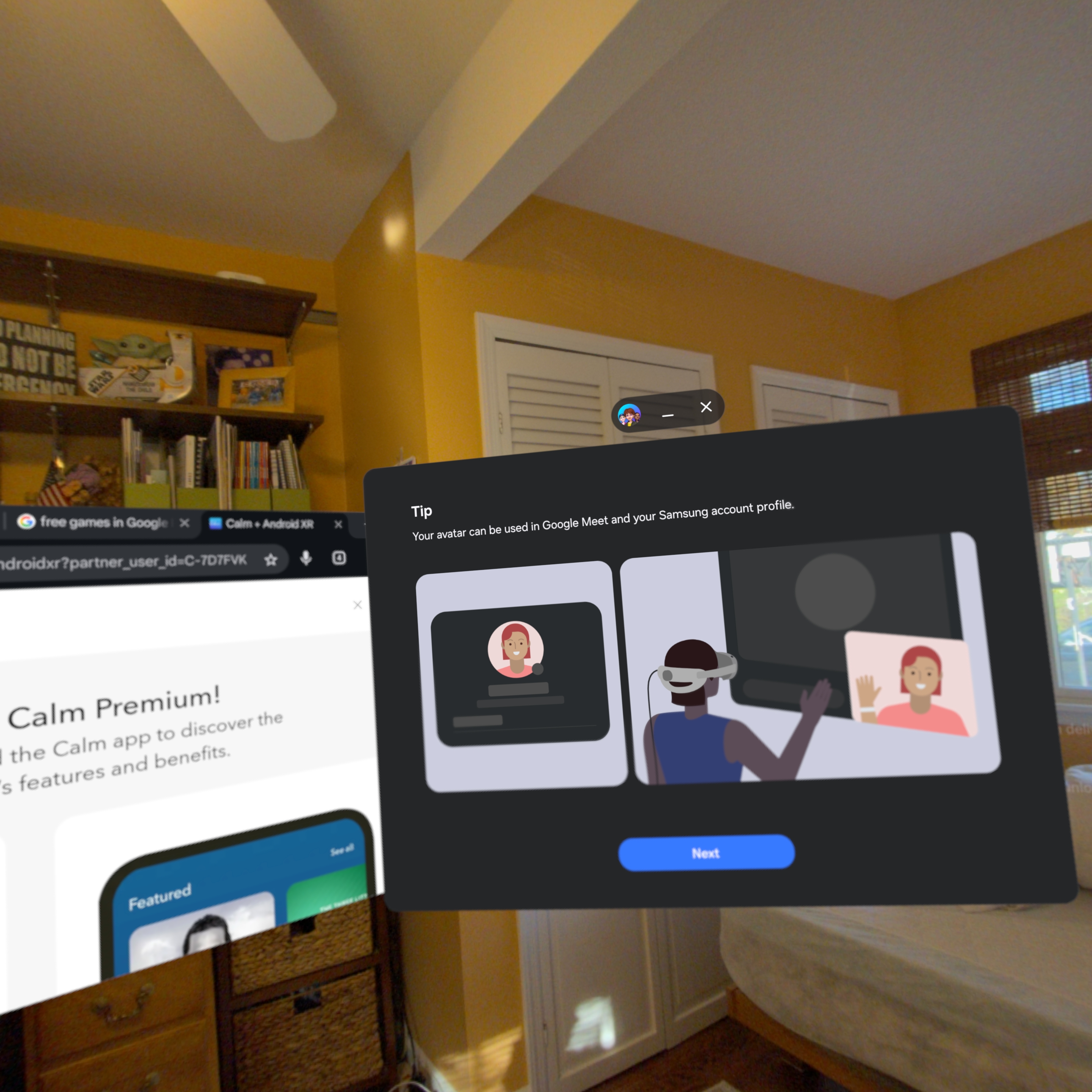
Gemini is an intrinsic part of the Galaxy XR experience. When you enable Gemini Live, you can let it see what you see and then interrogate it about whatever’s in front of you. That sounds amazing, but since most of us will not be walking around outside our home or offices when wearing the Galaxy XR, it’ll mostly be telling you about a world you already know.
It may, though, come in handy for tasks like putting together a new bike, if you’re comfortable wearing a $1,799 headset while performing that task.
Gemini can be a help for navigating the system, opening apps, and even finding the right content. I asked Gemini to open YouTube and find me some DIY content, and it quickly complied.

When I played an XR-designed game called ‘Inside Job,’ I asked Gemini to describe what was on screen. It accurately described the simulated workplace scene, but was less helpful when it came to gameplay and strategy.
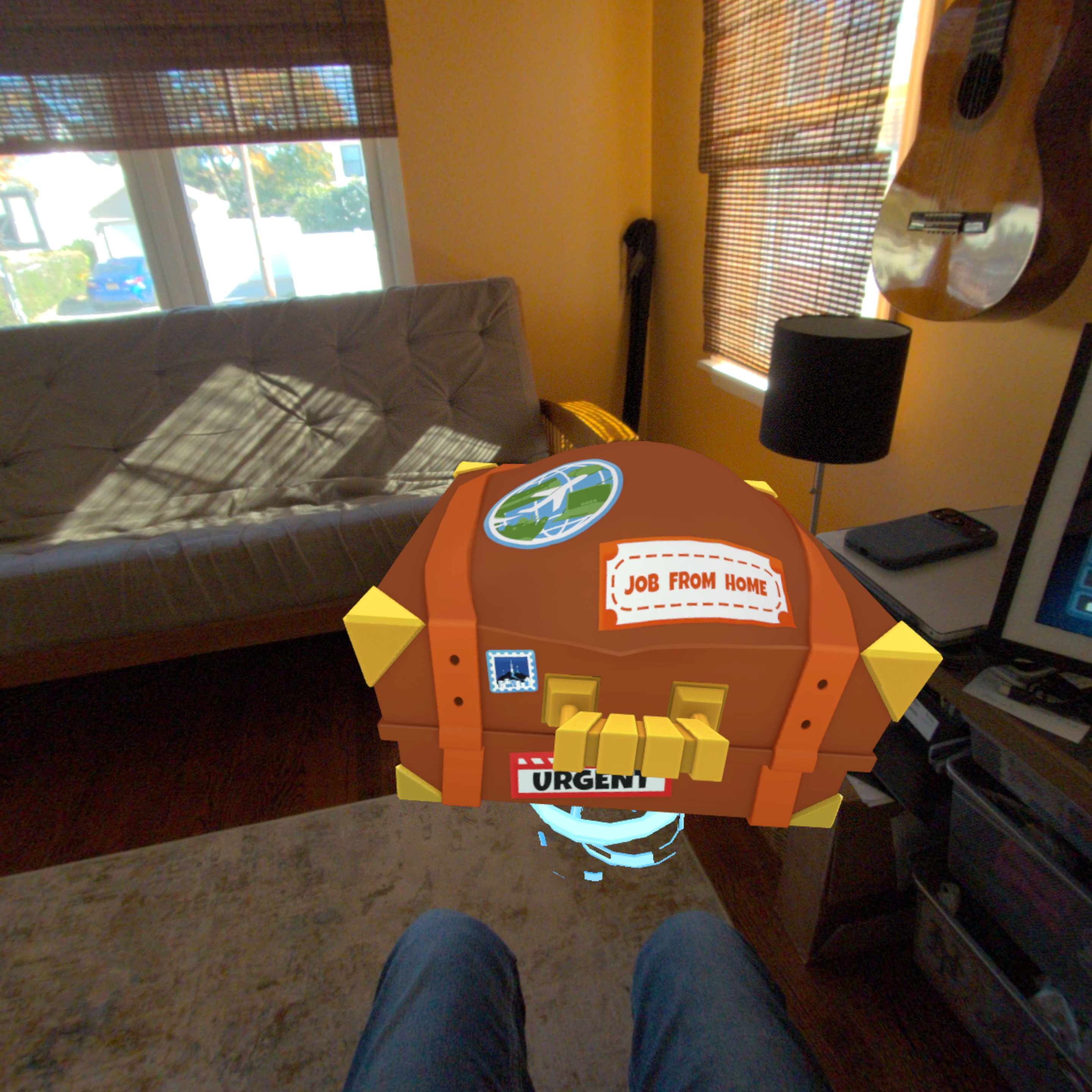
Gemini Live can’t generate images, but when I opened the Gemini app and asked for a picture of a donkey driving a car, it quickly complied and generated the image. I then used gestures to copy the image, open Gmail, paste the image, and mail it to myself.
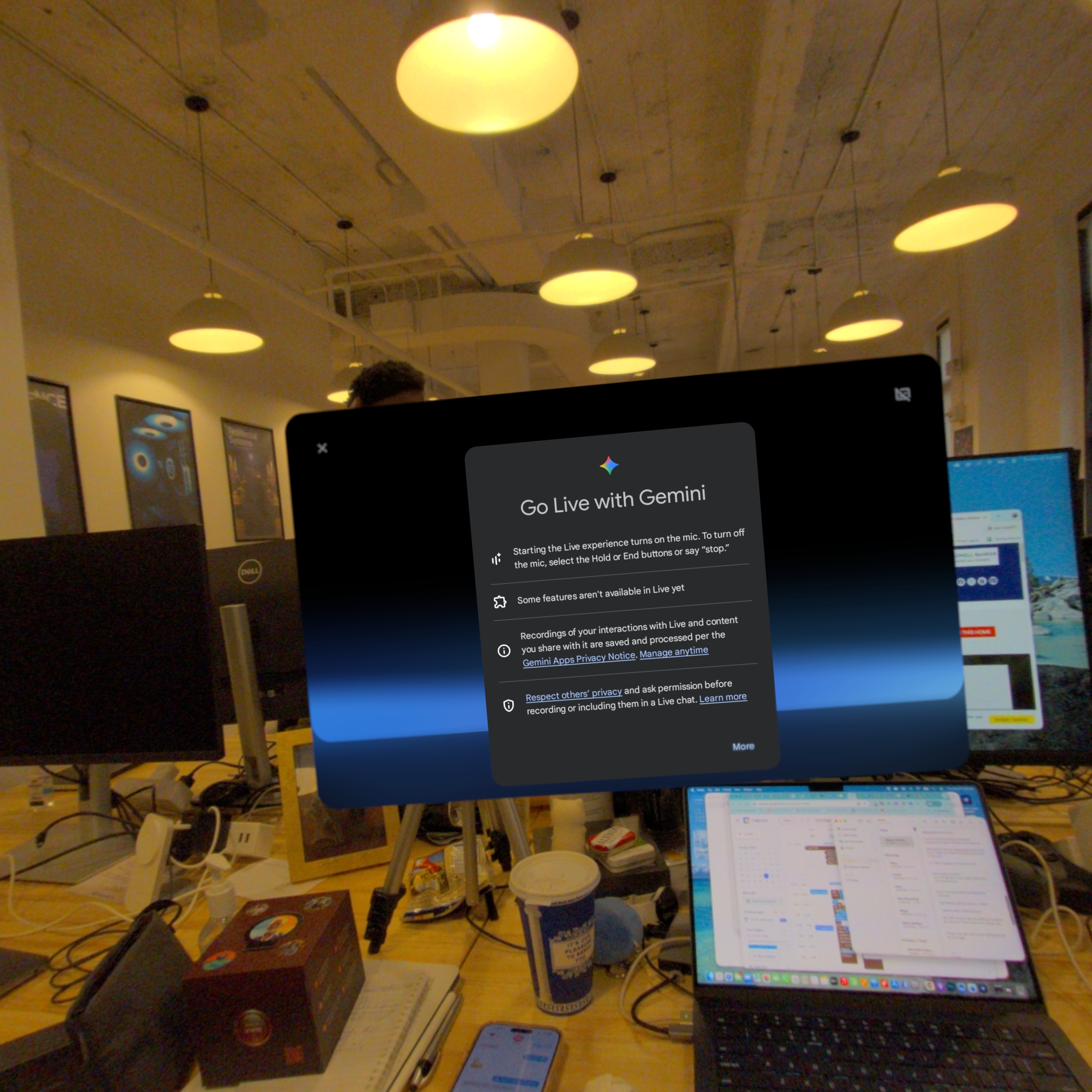
If you leave Gemini on all the time you can just keep a running conversation going, but it can get kind of annoying to have Gemini constantly interjecting, and I did not enjoy the fact that almost every time I asked it to do something, it would repeat the phrase, “Let me check that for you.” Fortunately, you can pause Gemini with a press of one of the top buttons.
Google Circle to Search is also present, but enabling it takes some practice. First, you have to look at your palm. Then you pinch your thumb and index finger until the Google ‘G’ logo appears. Then you turn your hand back toward the virtual screen and circle what you want to search on. After that, Google runs a quick search, and a floating results box appears next to the circled item. In my case, I circled a chair laden with bed sheets, and Google accurately identified the exact chair. Aside from the convoluted process, it’s a pretty impressive feature.
Like the Vision Pro, this is a wearable computer, rich with pre-installed apps and connected to a world of app options in the Google Play Store. Not all are designed for the XR experience, so I did my best to find ones that at least understood the platform and its control metaphors. Apps like YouTube and Gmail work smoothly, but third-party apps like, for instance, Spatial TV can be disappointing, especially when they do not follow interface control metaphors.
On YouTube, I watched a Red Bull-produced 3D video called World’s Fastest Drone Camera vs F1 car. While the screen didn’t fill my view, I found I could use the quick settings to turn on Virtual Environments and then settle in to watch a video in a daytime or nighttime mountain landscape.

The video was fun and compelling, but I never felt like I got as up-close to the action as I do when viewing some of Apple’s Immersive content. I think more people have to shoot content specifically for the Galaxy XR and take better advantage of all those millions of pixels.
I also watched a 3D trailer for Avatar: The Way of Water that looked excellent.
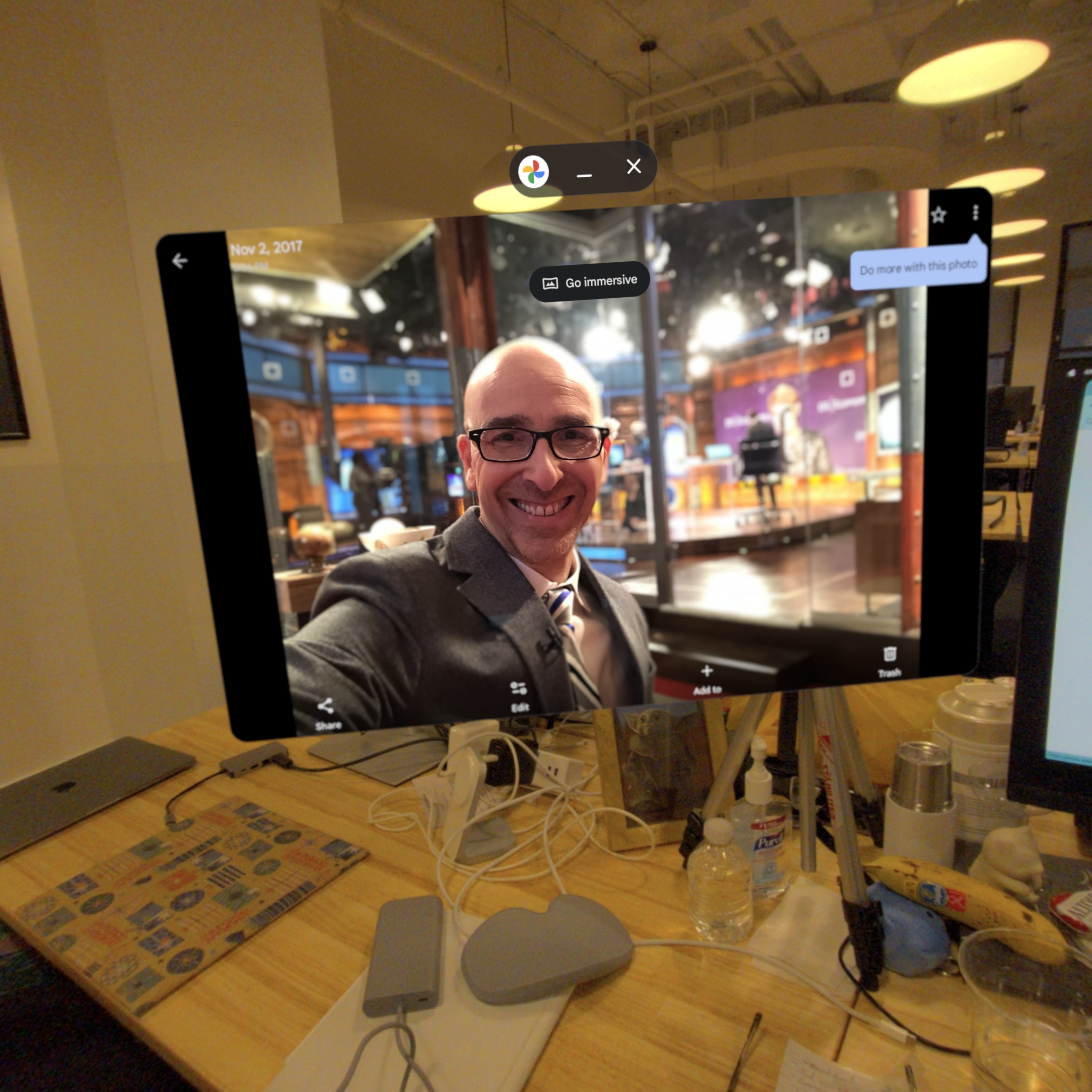
You have the option to create a 3D, cartoonish avatar of yourself for interactive play and activities. These are not very compelling, and I await the life-like avatars Samsung showed off during the Samsung Galaxy XR launch event.
The headset is also a great way to view photos and to convert them into spatial (stereo) experiences. While I wish the spatial conversion icon in the Google Photos App was more than a graphic (a ‘Make 3D’ label would be nice), the effect works well on virtually any photo – and the effect is even better when you go ‘Immersive’ and remove the photo borders.
One of the best experiences is Google Maps, an app nearly perfectly built for voice, gaze, and gesture control. I loved asking Gemini to whisk me off to a faraway place in Maps, then I used my eyes and hands to fly around. I could drop down to street level, and use gaze and gestures to virtually walk around a city. I could even go inside some businesses.
After some back and forth with Samsung I did figure out how to connect the Galaxy XR to a Samsung Galaxy Book. You start by selecting PC Link in the XR’s quick settings, then you go into the display settings on the laptop and choose to connect to it as a wireless display. The virtual screen that appears is sharp, and can be as big as you want it, but it’s not curved like the Vision Pro’s virtual MacBook display. Plus, since the pass-through isn’t as clear (I need to see the laptop’s real keyboard after all), I can’t imagine myself working for any length of time in this setup.
Throughout my time using the Samsung Galaxy XR I could hear the fan running. It’s not that anyone else could hear it, but since it was on my face and close to my ears, well, I could hear it almost anytime I wore the headset. On the one hand, I know this means that a powerful chip is running inside. On the other hand, isn’t there a more elegant and less noisy way to dissipate system heat?
Perhaps if I hadn’t spent the last two years using the original Vision Pro, and hadn’t just reviewed the M5 model, I might feel differently; this would all feel new to me, after all. But you can’t turn back the clock, and the Samsung Galaxy XR has arrived after the first and best spatial computer. Its interface metaphors are well known, and virtually perfect. Samsung’s interface and level of control feel, at times, like a cheap imitation – it is indeed a lot cheaper, and does feel at least somewhat influenced by the Vision Pro.
Overall, the experience does show promise, but it needs more bespoke apps, fewer duplicate Samsung apps (Bixby? Really?), even deeper integration of Gemini, better hand and eye tracking, and maybe an interface upgrade.
Software and Experience score: 3.5
Samsung Galaxy XR: Battery and performance
- The external battery is a bit heavy and will need a pocket
- Long-lasting
- The cable is long enough
- The proprietary attachment system is dependable

When it comes to powering its spatial computer, Samsung made the same decision as Apple: keep the weight of the battery off the head. So even though the Samsung Galaxy XR looks a little bit like a HoloLens, there’s no weighty battery on the back of your head.
Instead, you get a roughly half-pound battery pack attached to a roughly 3.5-foot woven cable that ends in a proprietary adapter. There’s a little button on the top that you use to release it from the headset. The battery pack also includes a USB-C-in charge port for recharging the brick.

As for longevity, the pack is pretty impressive. It got me through a full day of intermittent use, although it’s rated for about two hours of continuous use, which is slightly less than the Vision Pro’s battery pack.
You might attribute the battery life to, in part, a rather efficient and AR/VR/AI-ready bit of silicon, the Qualcomm Snapdragon XR2+ Gen 2 Platform (backed by 16GB of RAM and 256GB of storage), which, while obviously generating some serious heat (see my comments re the fan noise above), seems to be rather efficient. As for the overall power, I don’t have benchmarks, but as I noted, AI image creation was pretty fast, and all other operations were smooth, including web browsing, video watching, and game-play.
Battery and Performance score: 4.5
Should you buy the Samsung Galaxy XR?
|
Attributes |
Notes |
Rating |
|---|---|---|
|
Value |
Far cheaper than the competition and generally good value for the price |
4 |
|
Battery and Performance |
Backed by 16GB of RAM, the Qualcomm Snapdragon XR2+ Gen 2 Platform provides plenty of power for smooth performance throughout, but obviously needs a fan to keep it cool. Battery life is impressive |
4.5/5 |
|
Design and Display |
It’s a decent if slightly retro design with good-enough materials, but Samsung gets major points for the device’s light weight and balance. The displays are sharp, and provide more pixels than a Vision Pro |
4/5 |
|
Software and Experience |
Samsung needs to take a long hard look at the gaze and eye tracking, which were not nearly precise enough for my tastes. The interface is good but also a little reductive. I would not have kept so many Samsung-specific apps in there, and Samsung needs more eye-popping XR-specific experiences. Gemini integration is good but feels like it could go further |
3.5/5 |
Buy it if…
Don’t buy it if…
Also consider
How we test
For my Samsung Galaxy XR review, I spent a week wearing the headset. I watched movies, played games, drew, and used Gemini
Read more about how we test
- First reviewed November 2025










